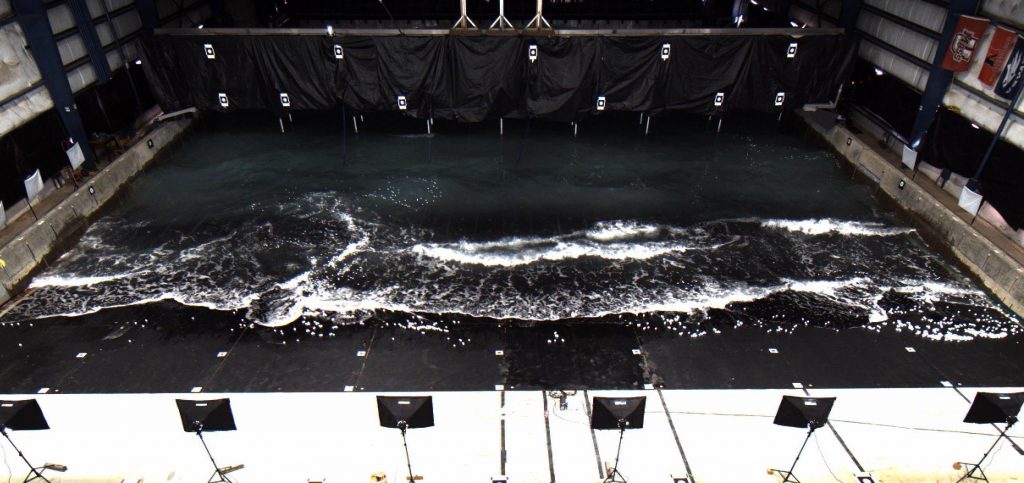Laboratory Experiments and Numerical Modeling
The shoreline and the intertidal zone can become contaminated by pathogens and excess nutrient supply from rivers and storm water runoff, which can disrupt marine habitats and necessitate beach closures. Here, the generation and evolution of transient rip currents, a primary mechanism for cross-shore exchange of tracer (e.g., contaminants, larvae, and sediment), is investigated at the directional wave basin at Oregon State University. Laboratory experiments involve the generation of a set of random directional waves that, upon breaking, generate surfzone eddies that may combine to form episodic seaward ejection events known as transient rip currents. This research uses a combination of remote sensing and other instruments to evaluate rip current generation. Three-dimensional numerical models are used to simulate rip currents under laboratory conditions and a wider range of wave forcing and bathymetry.
People: Nirnimesh Kumar, Melissa Moulton, Christine Baker, Emma Nuss
Funding: National Science Foundation


